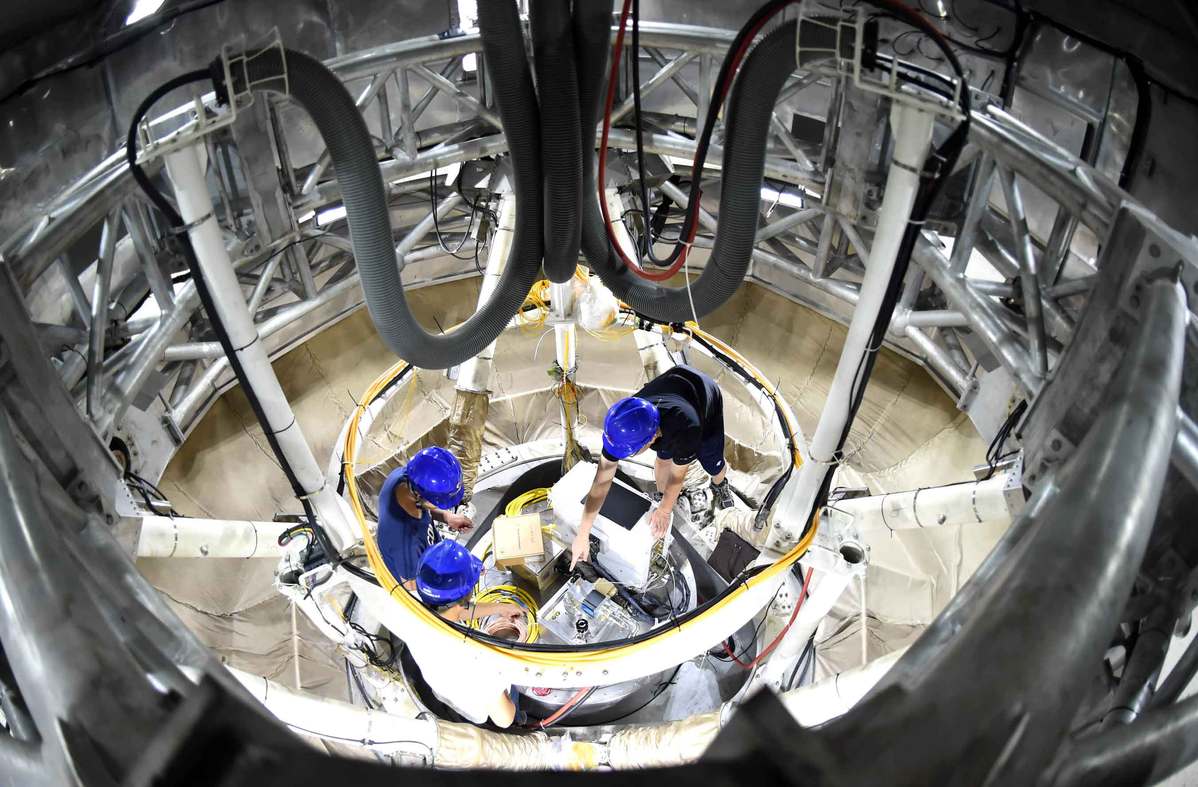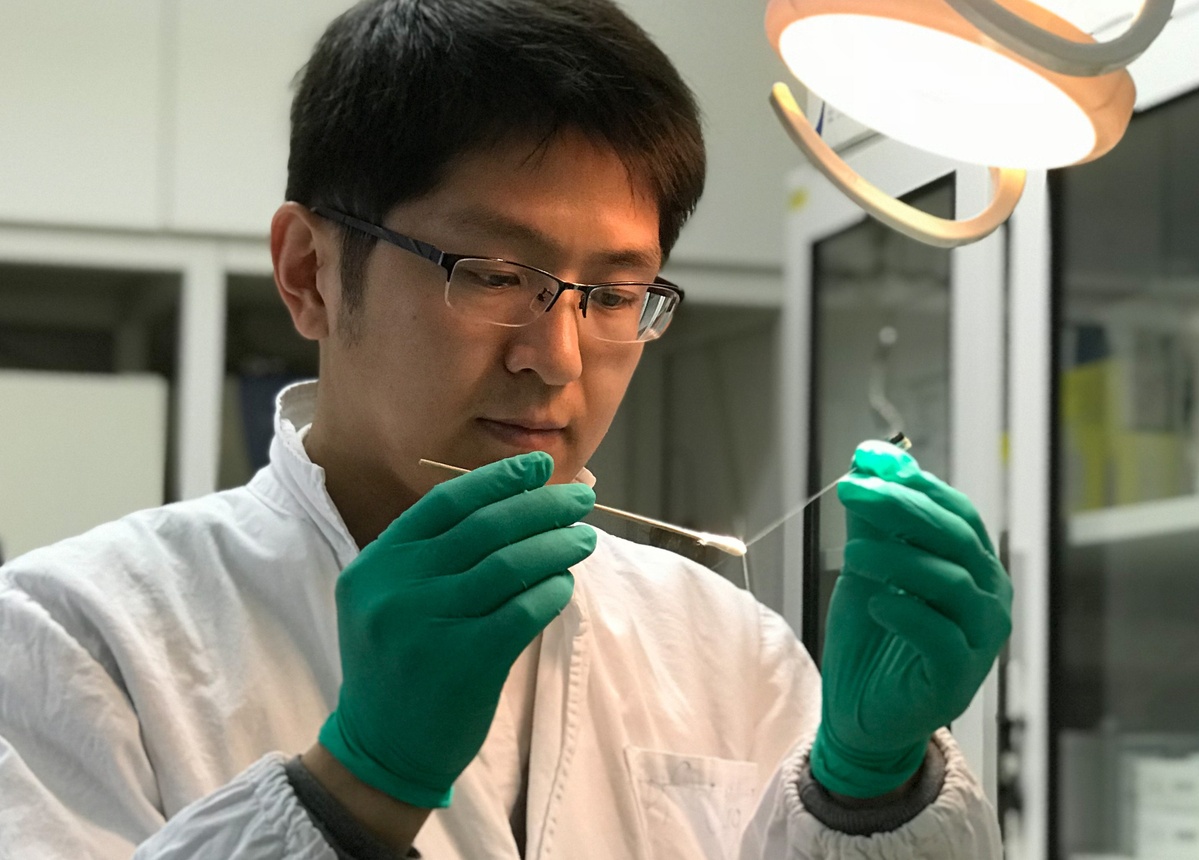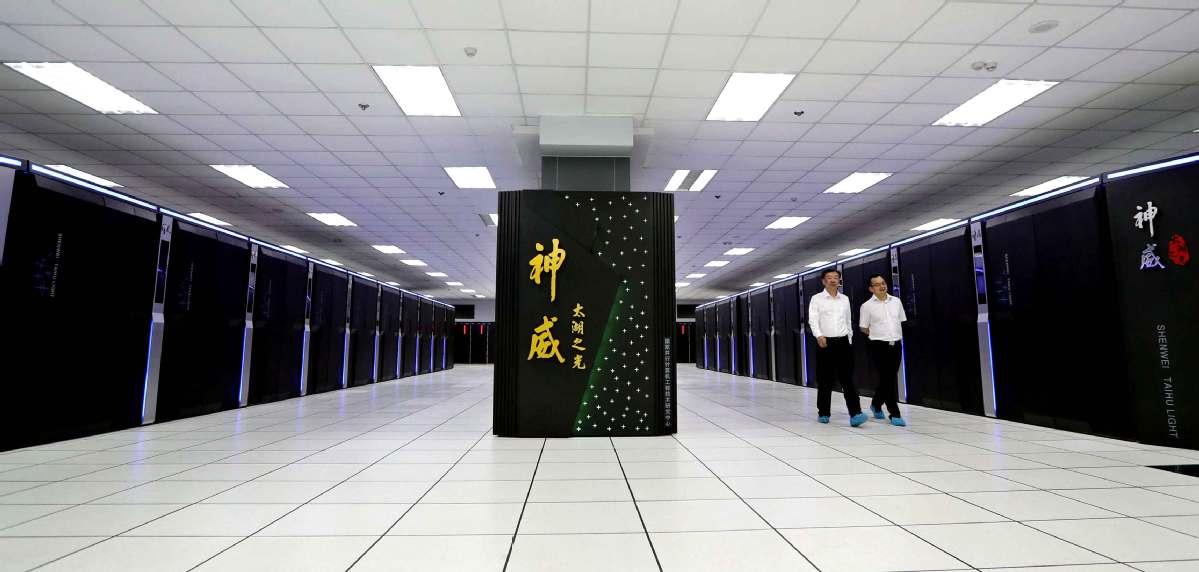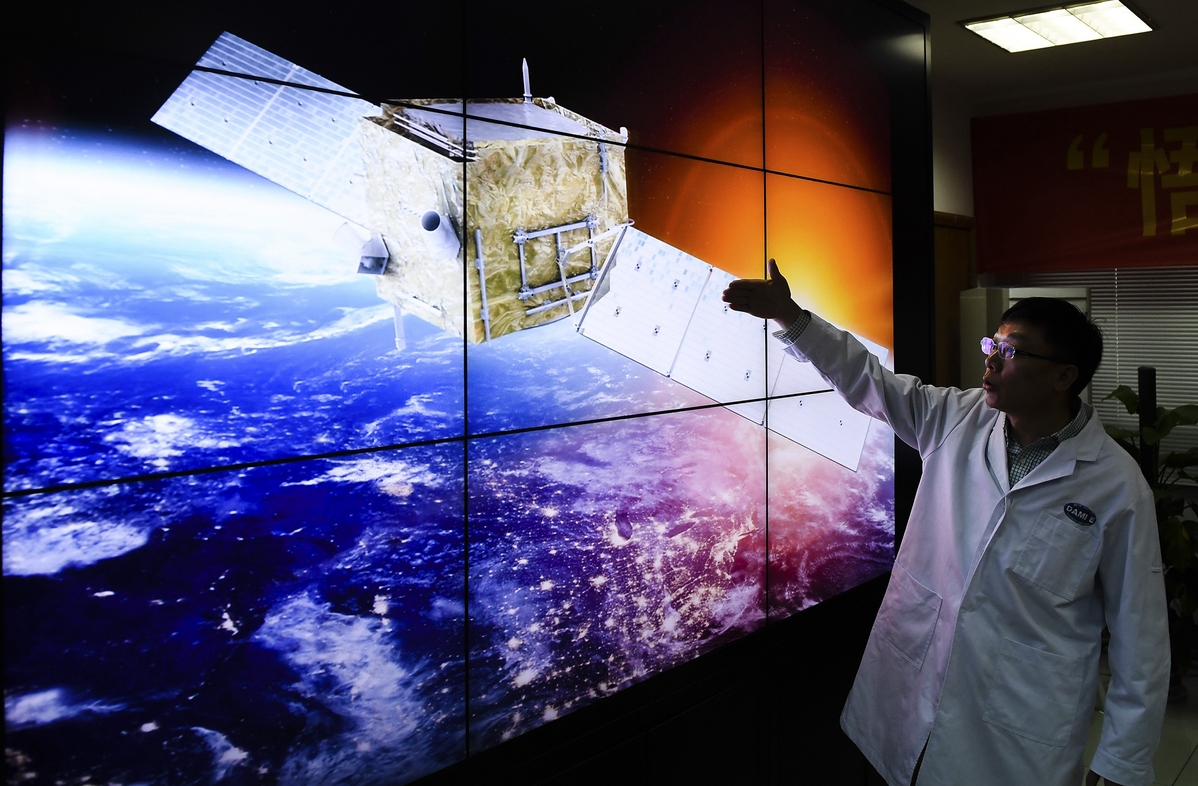

Engineers work in the core of the Five-hundred-meter Aperture Spherical Radio Telescope in Guizhou province. OU DONGQU/XINHUA
The country is working to regain its lost status as a scientific power-house.
Under a blue spotlight a mouse's brain lies immersed in liquid. A diamond blade peels off a layer of brain tissue 1 micron thick, less than the width of a human hair.
The layer is scanned and imaged. About 10,000 layers will be peeled off to get a map of the entire brain.
When displayed on a computer the images of the organ's colorful neural and vascular systems look like intricate highway networks. This is the world's clearest map of a mammalian brain.
Dozens of such instruments are working round the clock in the spotless labs of the Suzhou Institute for Brainsmatics at Huazhong University of Science and Technology, or HUST, in Suzhou Industrial Park in the eastern province of Jiangsu. Nearby are the ancient Suzhou Gardens, famous for their inventive and exquisite design and oriental aesthetics.
The journal Nature recently reported on the work of the brain-imaging institute in Suzhou, arousing great interest in academic circles.
"We have achieved success with mice and are making efforts to map the brains of primates, which are more advanced and complicated," Li An'an, deputy-director of the institute, said.
"Our ultimate goal is to lead the world to get a precise map of the human brain, which will help us uncover its secrets."

A scientist selects neurons to study visual processing of the brain at a laboratory in Beijing. LIU YE/XINHUA
Regaining pride
This is just one of China's achievements at the frontier of science and technology. In his series of books Science and Civilization in China, Joseph Needham, a British science historian, described China as a great country of invention and creation that fell behind in modern times.
Indeed, in the 20th century, few Chinese participated in the world's major scientific and technological advances.
But that situation is changing rapidly, and now Chinese are working in almost every field of science and technology, from internet development to brain studies, from probing space to exploring the deep ocean, from observing the universe to researching micro particles.
In a cave in Wuhan, capital of Central China's Hubei Province, scientists from HUST have measured the gravitational constant for more than 30 years, and recently obtained the most accurate result ever.
Isaac Newton discovered the principles of gravity more than 300 years ago, but the measurement of the gravitational constant had always been inaccurate.
"The precise measurement of the gravitational constant is important for deeper understanding of gravity, and the measuring technology could be applied in navigation and the search for mineral deposits. The study might also help us figure out whether the universe has additional dimensions as surmised by Stephen Hawking, which might enable humans to traverse space and time," Tu Liangcheng, director of HUST's gravitation center, said.

The Sunway TaihuLight, a supercomputer developed in China, at work in Wuxi, Jiangsu province. HUAN WEI/FOR CHINA DAILY
In recent years, China has intensified efforts to explore the universe and reclaim pride in the nation's outstanding achievements in astronomy in ancient times.
As early as 4,000 years ago, China had full-time astronomical officials and the world's earliest record of Halley's comet. The length of a year was measured and determined by Chinese astronomers more than 700 years ago, in line with today's Gregorian calendar.
China recently built the world's largest single-dish radio telescopethe Five-hundred-meter Aperture Spherical Radio Telescope - in Guizhou province, which has discovered dozens of new pulsars.
Scientists at China's Purple Mountain Observatory and other institutions are pushing forward the construction of an observatory on the inland icecap in Antarctica.
"That will definitely be a world leader," said Shi Shengcai, director of antarctic and radio astronomy at the observatory.
Completed in 1934, Purple Mountain was the first modern observatory built by China, and the original intention was to avoid the monopoly of astronomical research by Western colonialists in the country.
In the observatory's new office park in the suburbs of Nanjing, capital of Jiangsu province, scientists are working on a next-generation space detector to search for dark matter.
The Chinese philosopher Zhuang Zhou, who lived more than 2,000 years ago, believed material structures could be divided infinitely. Today, Chinese scientists continue to explore the microcosmic world, and have made many breakthroughs in recent years in fields such as quantum communication, neutrinos and iron-based superconductivity.

Chang Jin, chief scientist for the Dark Matter Particle Explorer, discusses the satellite at the Purple Mountain Observatory in Nanjing, Jiangsu province. JI CHUNPENG/XINHUA
Breaking monopolies
Suzhou Nanomicro Technology, a private nanotechnology company, has developed a nanomaterial that looks like white powder, but is actually tiny spheres thinner than a human hair with strong absorbability that can be used in pharmaceuticals and liquid crystal displays.
"We have broken the technical monopoly of the United States and Japan, and saved hundreds of millions of dollars in import costs for China," Jiang Biwang, chairman of Nanomicro, said.
Many young Chinese are now involved in innovation. Suzhou Novosense Microelectronics Co was established five years ago to develop core semiconductors for sensors and isolators. All the founders of the company were born after 1980.
Wang Shengyang, the CEO, said research and development personnel account for more than half the employees.
Statistics show that Chinese investment in research and development in 2016 exceeded that of the entire European Union and was second only to the US, accounting for 21 percent of the global total.
Moreover, China has the world's largest number of R&D personnel, and ranks second in the world in the number of scientific papers published in international journals. Scientific and technological advances contribute 55.3 percent of China's economic growth. (China Daily)

86-10-68597521 (day)
86-10-68597289 (night)

52 Sanlihe Rd., Xicheng District,
Beijing, China (100864)

